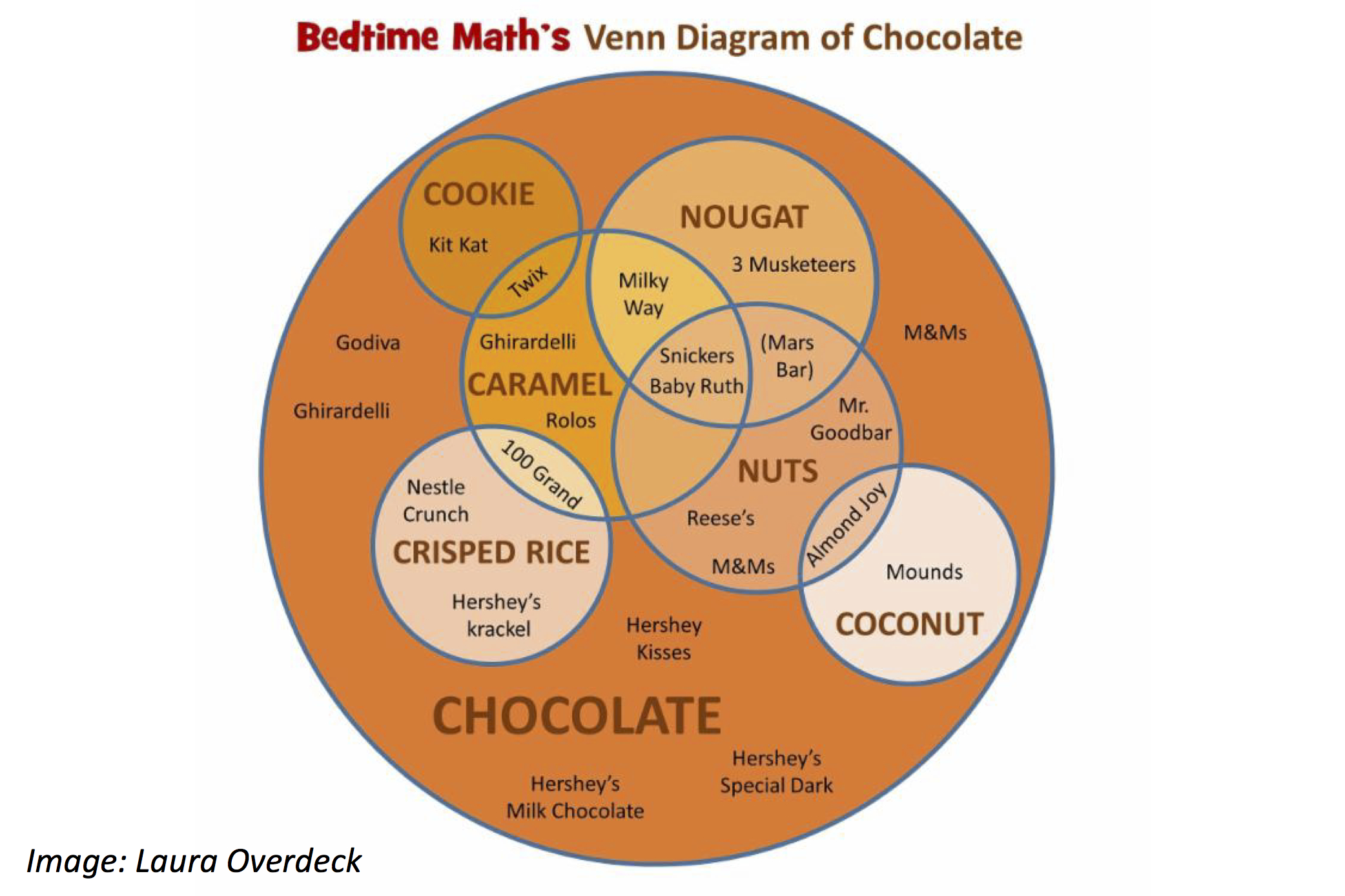There’s all kinds of Halloween candy – but they all have the same basic ingredients. LOTS of them have chocolate, and then some of those mix in caramel, like round Rolos. Some have nougat, like 3 Musketeers. And then some candy has nougat AND caramel, like Milky Way. In this “Venn Diagram” here, each circle contains treats that have something in common, like chocolate or nuts. Where 2 or more circles overlap, those treats have the ingredients from all the circles involved. Find your favorites, and if we missed them, you can figure out where to put them!
Wee ones: Which has more squares, a chocolate bar with 8 squares or a chocolate bar with 10?
Little kids: If you have 10 pieces of candy and 7 of them have caramel, how many don’t? Bonus: If the non-caramel pieces have nuts along with 6 of the caramel ones, how many pieces have nuts?
Big kids: If in total 20 of your treats have caramel and 20 have nuts, but 5 of those pieces have both ingredients, how many pieces do you have in total? Bonus: If you then get 23 more treats, how many of them at most can be plain if they double your caramel-only total?
Answers:
Wee ones: The bar with 10 squares.
Little kids: 3 pieces. Bonus: 9 pieces.
Big kids: 35 pieces. You still have 20 in total with caramel, some of which happen to have nuts, and then you have another 15 nuts-only pieces. Bonus: At most 8 pieces, since 15 of them will need to have caramel.

